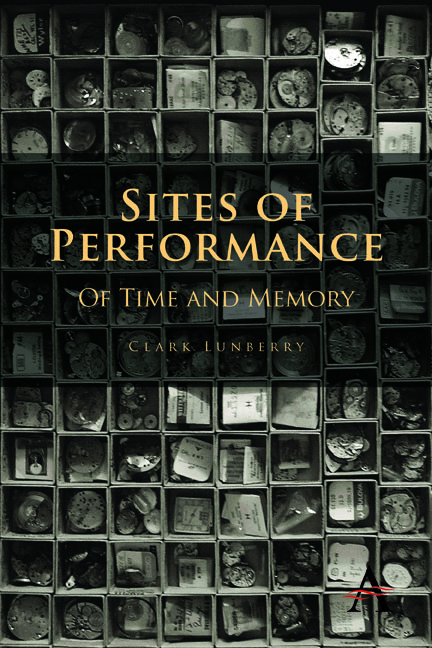Book contents
- Frontmatter
- Dedication
- Contents
- Acknowledgements
- Preface
- I Stagings: Plays of Space
- Chapter 1 A Body Bending: Removing the Boots of Beckett and Proust
- Chapter 2 (Silence): Scripting Absence
- Chapter 3 Blood on the Wall: The “True Tragic Pleasure” of Medea
- Chapter 4 Coriolanus in the Marketplace
- II Sightings: Sites of Time
- Bibliography
- Index
Chapter 1 - A Body Bending: Removing the Boots of Beckett and Proust
from I - Stagings: Plays of Space
Published online by Cambridge University Press: 05 November 2014
- Frontmatter
- Dedication
- Contents
- Acknowledgements
- Preface
- I Stagings: Plays of Space
- Chapter 1 A Body Bending: Removing the Boots of Beckett and Proust
- Chapter 2 (Silence): Scripting Absence
- Chapter 3 Blood on the Wall: The “True Tragic Pleasure” of Medea
- Chapter 4 Coriolanus in the Marketplace
- II Sightings: Sites of Time
- Bibliography
- Index
Summary
Why is it that I cannot stay within the ordinary, that I insist on principles, that I cannot go around dressed like others, that I like to walk in stiff boots!
—Søren Kierkegaard, “Repetition”His eye functions with the cruel precision of a camera; it photographs the reality of his grandmother.
—Samuel Beckett, ProustWatches and clocks are not the only things that tell time. Less precisely perhaps but just as surely, any object entropically registers time's impact, time's movement. A stone, a flower petal, a book, a photograph … even the thick leather of a “stiff boot” will soften with time, crack and finally crumble. Try as we might, there simply is no stopping it; for time's story insists on being told. Of course, a face, a body, also show time and its transformations upon their smooth surfaces, the skin as a site of time's inscription, its shadows cast legibly across it. A body thus marks time, measuring its incessant motion, its reality written there for all to read.
In what follows, objects and bodies, even a pair of “stiff boots,” will be theatrically aligned in Samuel Beckett and Marcel Proust's own conjoined stories of time's telling and memory's performance. Often told with the “cruel precision of a camera,” their converging tales of time will be enacted, their images of absence cast upon faces, upon bodies bending, gesturing toward their own disappearance.
- Type
- Chapter
- Information
- Sites of PerformanceOf Time and Memory, pp. 3 - 14Publisher: Anthem PressPrint publication year: 2014



